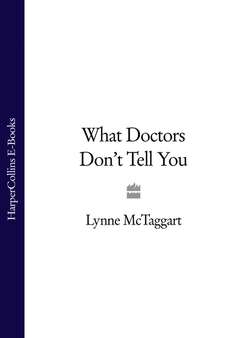Читать книгу What Doctors Don’t Tell You - Lynne McTaggart, Lynne McTaggart - Страница 14
ECG Readings
ОглавлениеBesides blood-pressure and cholesterol measurements, your doctor’s next favourite activity is listening to the state of your heartbeat. However, these days, the all-purpose stethoscope (never proved to have any advantages over the naked ear) has been replaced by a number of space-age gadgets, all designed to record the most minute changes in your heart’s ability to do its job.25 The stalwart of any cardiac specialist is the electrocardiogram (ECG), even though studies demonstrate enormous potential for error in recording or interpreting correct results. One study showed that computers, often used to interpret ECG readings, were only right two-thirds of the time, and missed 15 per cent of cases of enlargement of the right ventricle. Nevertheless, human beings didn’t fare much better; even trained heart specialists misinterpreted one out of every four readings.26 This is largely because, as with blood-pressure, readings can be affected as much as 20 per cent by recent activity, time of day, and even factors such as fear of the cardiologist’s findings! The late Dr Robert Mendelsohn wrote of a study in which electrocardiography detected only a quarter of proven cases of heart attack, and another study in which the tests found gross abnormalities in more than half of perfectly healthy people.27 As Stephen Fulder, author of How to Be a Healthy Patient (Hodder & Stoughton), notes, an incorrect ECG has led to ‘vague diagnoses of organic brain disease in healthy but unruly children, turning them into medical cases’.28
More state-of-the-art these days than the ECG is echo-cardiography – a diagnostic test on the heart, often using a mixture of contrast agents and soundwaves. The procedure had been gaining acceptance for its safety and accuracy. However, as with much ‘perfectly safe’ new technology, doctors have only recently realized that it is more dangerous than had been thought, possibly leading to life-and-death complications.
The first major study into the procedure discovered that it can be life-threatening in one in 210 cases, requiring special treatment or a stay in hospital; two people of the 3,000 studied suffered a heart attack after the procedure had been completed.29
The procedure often employs the use of microbubbles of a contrast agent like octafluoropropane, which are useful in visualizing the tiniest blood vessels of the heart. In laboratory research, rats have developed cardiac arrhythmias after being exposed to echocardiography because the contrast agent interacted with ultrasound, causing the alterations in heart rhythms. Although animal models often don’t apply to humans, this effect on a living being demonstrates that pulsed ultrasound can interact with bubbling contrast agents.30 There’s also evidence that the microbubbles cause destruction of capillaries, leaking red blood cells into skeletal muscle.31 Furthermore, the act of using pulse-sound waves with contrast agents in the brain has been shown to cause tissue damage to vascular walls, causing haemorrhage and tissue death.32
